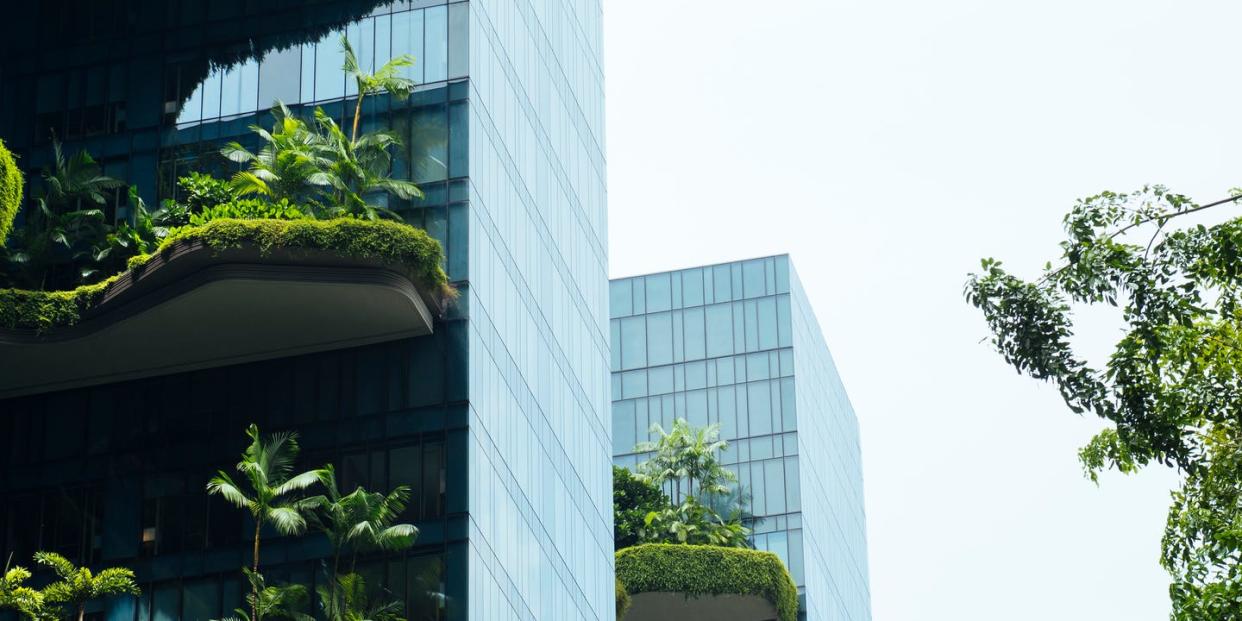The Future of Skyscrapers Could Include Cloud-Making Towers and Tsunami-Stopping Designs

The worldwide eVolo Magazine 2022 Skyscraper Competition selected three winners from 427 submitted projects.
First place was awarded to a concept that included cloud-making as part of the tower’s function.
Projects focused on creating more sustainable living practices across the world.
The future of architecture may include tsunami-busting designs and cloud-making towers. Abundant evidence of unorthodox design was on display at the eVolo Magazine 2022 Skyscraper Competition. The magazine is a journal focused on architecture and design that prioritizes sustainability through innovative design and technology. A skyscraper could be more than just a place to live or work, so the competition gives architects and designers a chance to explore the future of what this towering structure could be.
Established in 2006, this year’s annual event focused on recognizing “visionary ideas” that challenged architecture’s relationship with the natural environment through technology and materials.
🏙 You love to wonder what the future could look like. So do we. Let's nerd out over it together.
The jury selected three winners from the 427 entries. First place went to the Climate Control Skyscraper designed by South Korea’s Kim Gyeong Jeung, Min Yeong Gi, and Yu Sang Gu. The concept explores the use of skyscrapers to help modify weather conditions, including clouds generated by absorbing seawater that, in turn, can then help “regulate the weather by raining where there is a drought, absorbing clouds where heavy rain falls, or reflecting solar radiation.”
By anchoring the Climate Control Skyscraper with “subsea trusses,” the designers say they can use the structure itself to create clouds. The design can import resources through the building and mine the sodium chloride and ionic substances obtained by electrolyzing seawater (splitting it into its oxygen and hydrogen components). Using the power consumed by the skyscraper through solar and wind generation, the towers can transfer this raw material to a high-temperature pressure tank to help generate clouds and pure water.
“Water vapor moving upward is sprayed around the skyscraper in the form of clouds and stored in a membrane controlled by a control ring,” the designers explain. “The laboratory located inside the CCT (Climate Control Tower) transmits meteorological observation information to the control ring.” Then, as needed, the CCT can target areas in need of rain-filled clouds by calculating cloud movement according to wind direction and distance.
The second-place concept was the Tsunami Park Skyscraper, designed by Wang Jue, Zhang Qian, Zhang Changsheng, Li Muchun, Xu Jing of China. Inspired by mangroves and their intense root structures, this concept places the skyscraper on stilts in tidal areas of Tonga, even encouraging fishing from the buildings with platforms and terraces close to the water. But when a tsunami strikes, the concrete column design is shaped to pair with water cisterns to limit the power of the tsunami before it strikes land. During normal times, the concrete supports do more than just hold lives above them. They act as desalination ports, converting energy from the ever-flowing tide.
The Agro-Ecological Skyscraper, the third-place winner by Michał Spólnik of Austria and Marcin Kitala of Poland, focuses on experimental gardens and features a timber skyscraper designed to appear like an upright pinecone. Modules in the skyscraper create space for the gardens and serve as a home for researchers to explore vertical gardening. Designers envision each of these timber modules being somewhat interconnected, allowing animals to roam throughout the structure.
This trio of skyscraper concepts does more than just provide a room with a view—they create a building with a noble purpose. Plus, it isn’t every day that a building’s services come with cloud-making functions.
You Might Also Like

